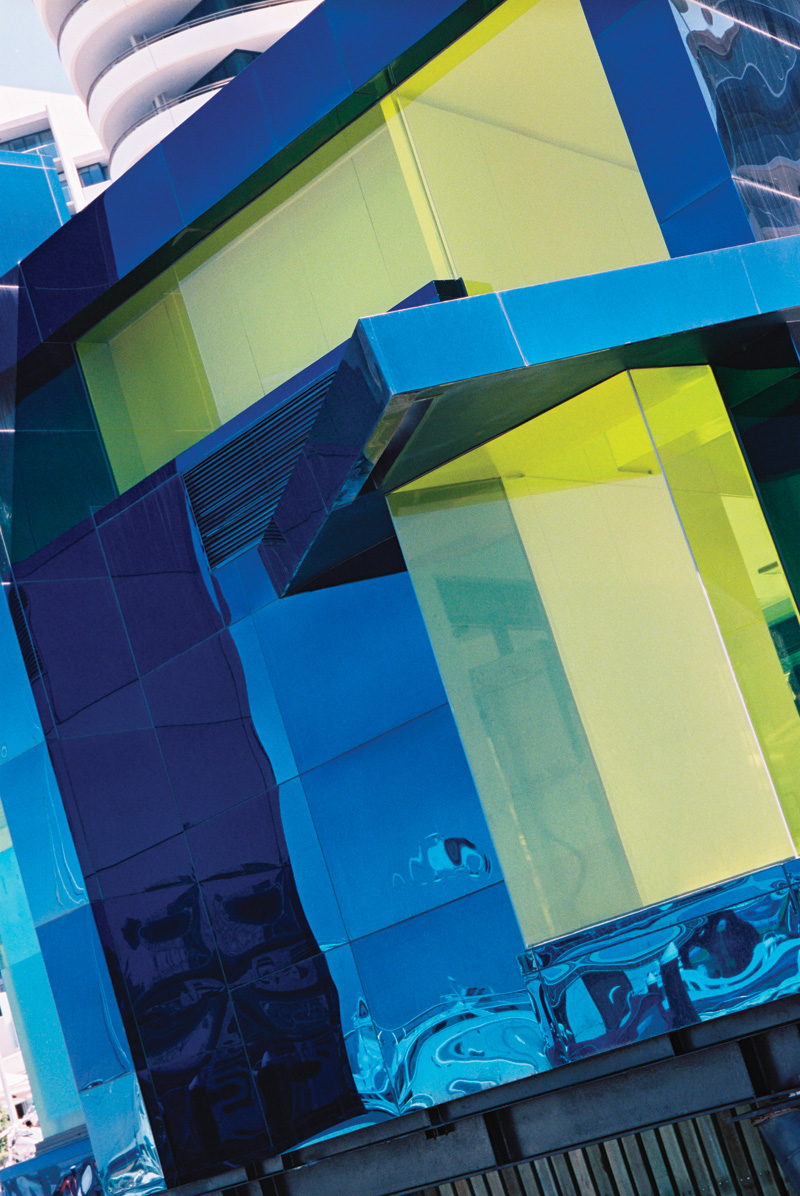
Stainless Steel Fish Bar
Development of Melbourne's Docklands Precinct has inspired an exciting range of creative architecture, featuring a diverse selection of building materials.
Special finish stainless steel enhances the facades of the prestigious NewQuay follies on Victoria Harbour promenade. The Fish Bar folly, clad entirely in blue mirror stainless steel, brings life to the water's edge by combining public convenience with creativity to produce a unique example of urban art.
The design is the result of a successful collaboration between the developer MAB Corporation, SJB/FKA architects and students from the upper design pool of RMIT's School of Architecture, which ran a design competition.
The winning concept, by students Sherry-Ann Kwok and Jessica Liew, was deemed to successfully unify and integrate art and architecture into a commercial or retail environment. The underlying aim of the follies was to create sophisticated architectural forms that break up the hard edge against the water and create defined destinations as people move around NewQuay.
Blue mirror stainless steel from ASSDA member Rimex Metals was chosen as it evokes suggestions of frozen water and adds bold, bright colour to the building, which consists of an arrangement of raking, interlocking planes. The physical properties of stainless steel and its corrosion resistance in this salt-water environment make the material a logical selection.
 The Colouring Process
The Colouring Process
As coloured mirror stainless steel is generally only produced in grade 304, a special mill run of 316 material was produced by Rimex UK to fulfill the architects' requirements for corrosion resistance and colour continuity.
Grade 316 stainless steel sheets were polished to a mirror finish before being coloured. In the colouring process, the stainless is immersed in a chemical bath to closely control the generation of the chromium-rich oxide film. This clear oxide film is present in all stainless steel and is the key to its excellent corrosion resistance.
By varying the film's thickness, a range of colours is produced, the same way that oil floating on the water's surface produces a rainbow effect. No dyes or pigments are used: the colour is due entirely to the physics of light distorting as it bounces off the stainless steel surface and back through the oxide layer.
Construction
Commercial builders, Icon Construction Management, were commissioned to construct the building. There were some challenging hurdles as the building is perched half on the pier and half over water supported by pylons.
Construction was performed from a barge with the use of booms and scissor lifts from the wharf.
Fabrication of the Rimex blue mirror sheet into cladding panels and their installation was performed by Alustain Fabrications, a Melbourne firm specialising in architectural stainless steel cladding.
The interlocking panels were pressed into individual pans and attached to a waterproof plywood substrate before fixing to a top hat section. The complex design called for almost every panel to be unique.
Together they form a weatherproof barrier capable of withstanding demanding coastal conditions. Unlike most faades, the stainless steel cladding was installed at the beginning of construction, enabling fixings to be concealed with only a 1-2mm margin between panels. ASSDA member, Fagersta Steels Pty Ltd, supplied the stainless steel for the project.
The Fish Bar folly contributes to the mix of open space experiences aimed at meeting the diverse needs of residents and visitors. The contemporary design and material selection demonstrate stainless steel's potential for integrating architecture and urban art.
Words: Neil Lyons, Photos: Anna Joske
This article featured in Australian Stainless magazine - Issue 24, March 2003.